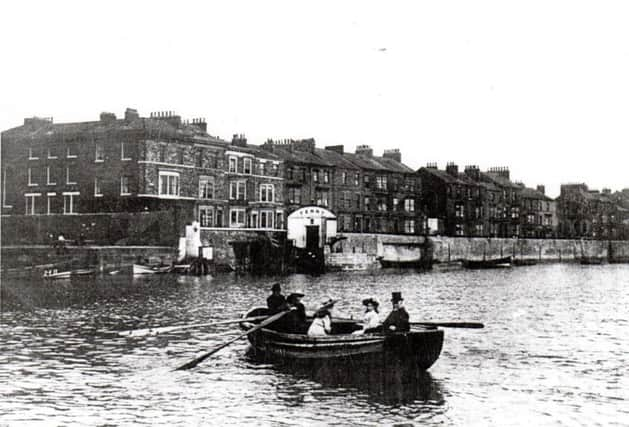It was THE way to travel in bygone Hartlepool


The people of Hartlepool didn’t have to imagine it from the 1600s onwards because it was a reality.
A ferry operated between the Headland and Middleton and it was massively popular.
Advertisement
Hide AdAdvertisement
Hide AdThe rise and fall of the ferry has been documented by researchers at the Central Library in Hartlepool and it is yet another example of the excellent facilities at the York Road venue.
Library officer Sandra McKay told us how the ferry was so popular, it could not cope with demand.
At its height, there were two ferry boats. They were large double-ended boats operated by boatmen in smart uniforms.
By 1890, there were complaints from the people of Hartlepool that the ferry wasn’t coping with the level of demand. It started a spate of ideas for other transport services in town.
Advertisement
Hide AdAdvertisement
Hide AdOne was for a tunnel. Another was for a hydraulic bridge. “Neither idea came to fruition due to the cost and work involved,” said Sandra.
By 1918, when the men of Hartlepool needed an efficient service to get them to work, shipyard workers threatened to strike over the issue.
The Commissioners cut the service through lack of staff and sold it to the Hartlepool Corporation for £500.
But the Corporation service was not without its critics. Northern Daily Mail reports at the time showed that a heated debate had been held among councillors about the service.
Advertisement
Hide AdAdvertisement
Hide AdThey reported how, in 1918, shipyard workers had tried out the service and declared it ‘an altogether inadequate system’.
Councillors called for an adequate and efficient system to be brought in at once.
It was saved - for a while - and ran alongside another ferry operated by fishermen but by then, the Corporation ferry was operating at a loss.
In 1939, the fishermen abandoned their ferries and took over the Corporation Service until 1947 when it seemed it would all fold.
Advertisement
Hide AdAdvertisement
Hide AdIn 1946, the service was again under scrutiny with councillors saying it was losing £500 a year.
But Tom Boagey and ex-serviceman Robert Pounder stepped in and saved the service and Tom ran it until 1952.
It’s demise finally came in 1952 when Tom died. “Days later, the ferry was closed and never re-opened,” said Sandra.
The end was confirmed at a meeting of the Hartlepool Councils Special Ferry sub-committee in December 1952.
Councillors agreed that;
Advertisement
Hide AdAdvertisement
Hide Ad* The ferry service should be discontinued, and the boats and gear offered for sale.
* The jetty and steps should be closed to the public.
* The Port and Harbour Committee should be asked to maintain the light on the ferry jetty.
All this and more details on the ferry can be found in the reference section of the Central Library.
And for more information, contact (01429) 272905.